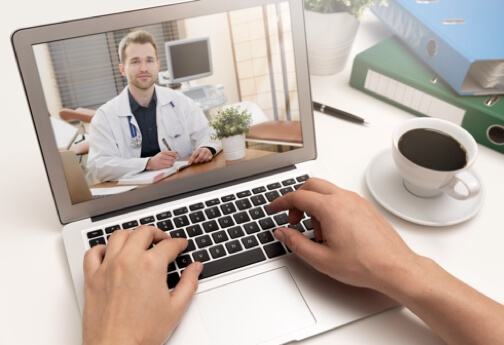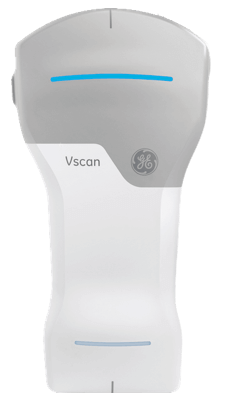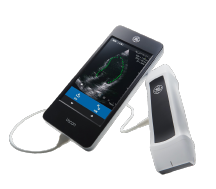
In cardiac care, mere minutes matter. That’s why some medical specialists today may be turning to prehospital ultrasound to accelerate treatment, ensuring patients receive life-saving therapies faster.
In the hands of paramedics and other emergency services providers, handheld ultrasound devices, such as GE’s Vscan Extend™, may obtain cardiac images sufficient enough for interpretation even before patients arrive in the emergency department. With proper training, prehospital clinicians can not only use ultrasound to identify a problem, but also to help triage patients.
Benefits of Prehospital Use
Point-of-care ultrasound (PoCUS) has already been shown to potentially help diagnose a plethora of life-threatening conditions, such as hemoperitoneum, pericardial effusion, cardiac tamponade, pneumothorax and abdominal aortic aneurysm. Prehospital ultrasound can also identify situations where resuscitative efforts could be beneficial and should be continued. Putting those diagnostic capabilities to use en route to a hospital may save more lives.
For example, according to investigators in a World Journal of Emergency Medicine study, PoCUS education for paramedics can be helpful to patients: “Our pilot study suggests that with minimal training, paramedics can use [ultrasound] to obtain cardiac images that are adequate for interpretation and diagnose cardiac standstill.”
An American Journal of Emergency Medicine editorial also discussed the importance of using prehospital ultrasound in situations with critical patients.
“Streamlined [focused assessment with sonography for trauma] may increase triage accuracy of blunt torso trauma patients in mass casualty incidents with limited medical resources,” the authors noted. “We recommend the use of [streamlined focused assessment with sonography for trauma] to decrease patient triage to treatment time in any unfortunate future disasters.”
In many instances, prehospital clinicians are the first to interact with critically ill patients. Consequently, having PoCUS available to provide real-time internal images may provide significant benefits to both cardiac life support and advance trauma support. Not only may it assist with any prehospital decision-making, but it may also help inform how physicians proceed once patients arrive in the emergency department.
Real-World Implementation
Prehospital ultrasound offers a real-world option in helping to provide immediate care to patients in acute situations. Using GE Vscan Extend™, a helicopter paramedic unit in New Zealand screened airlifted patients for potential cardiac problems prior to landing at Dunedin Hospital, which is located in an area where road travel can be precarious.
In these and other frenetic conditions, PoCUS is helpful because paramedics may clearly see heart function. With ultrasound, New Zealand’s paramedics assessed cardiac activity and checked for internal bleeding, thoracic injuries and pulmonary embolisms. They also used handheld ultrasound to side-step unnecessary procedures. For example, PoCUS use determined a suspected pneumothorax in one patient did not exist, so paramedics opted not to decompress the chest.
Prehospital ultrasound may also be used to triage patients who should be taken immediately to the operating room. Doing so saves valuable time otherwise spent running further diagnostic tests in the emergency department.
PoCUS Training
Handheld ultrasound can be a valuable tool for nearly any healthcare provider who receives proper training. Paramedics and other prehospital clinicians may achieve the same level of skill as physician sonographers if they undergo comparable instruction.
This level of accuracy may alter and positively impact the care a patient receives upon arriving at the hospital by giving physicians insight into a patient’s condition.
While research into the use of prehospital ultrasound is in the early phases, study results and real-world implementation have already shown it may play a vital role in time-sensitive, critical conditions. All in all, proper use may decrease both mortality and morbidity, improving overall patient outcomes.
The device has been verified for limited use outside of professional healthcare facilities including during transport. Use is restricted to environmental properties described in the user manual , please contact your GE HealthCare sales representative for detailed information




